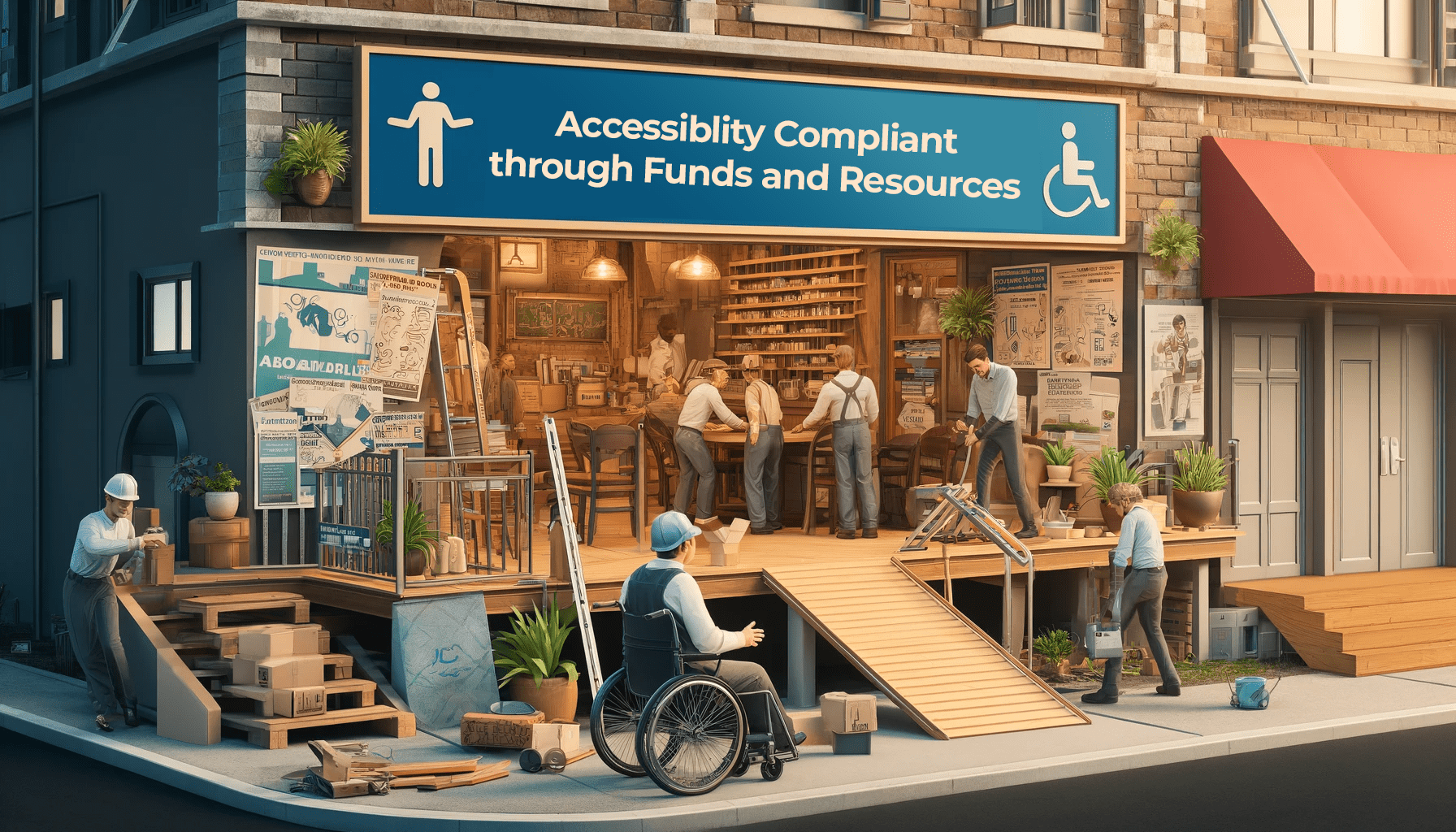Over the years, web accessibility compliance has become a key priority for businesses and website owners as they face penalties for non-compliance and this applies to not just websites, but mobile applications as well. In short, the need for greater digital accessibility for users with disabilities is ramping up. This is where web accessibility certification comes into play. Think of it like a formal acknowledgment that your website is compliant with AODA requirements.
There are steps you can take to acquire web accessibility certification, all of which are outlined in this comprehensive guide that covers everything from web accessibility standards, the benefits of obtaining certification, and actionable steps you can take.
What are web accessibility standards?
Web accessibility standards are rules that help make sure websites and apps can be used by everyone, including people with disabilities. These standards help make it easier for people who may have trouble seeing, hearing, or using a mouse or keyboard to navigate the web. By following these rules, we can make websites more user-friendly for everyone.
Types of Web Accessibility Standards
Web Content Accessibility Guidelines (WCAG)
WCAG is a set of important rules that helps make websites easier for people with disabilities to use. It was created by experts from around the world. There are three levels of these rules:
- Level A: This is the basic level, covering the most important things that websites must do to be usable.
- Level AA: This level adds more rules to make websites better for people with different disabilities, and most websites aim to meet this level.
- Level AAA: This is the highest level, making websites extremely accessible, though it’s hard for most sites to reach this level.
Section 508
Section 508 is a law in the United States that requires government websites to be accessible to people with disabilities. This means that federal websites must follow specific rules to make sure everyone can use them.
Accessible Rich Internet Applications (ARIA)
ARIA helps make interactive parts of websites, like buttons, drop-down menus, and forms, more accessible. It allows people using assistive technologies, like screen readers, to understand and use these elements.
ISO/IEC 40500
ISO/IEC 40500 is an international standard that makes sure websites and other digital content follow the guidelines set by WCAG. It’s used by organizations worldwide to show that they are meeting accessibility standards.
Understanding Web Accessibility Standards
The Web Content Accessibility Guidelines (WCAG) serve as the foundation for accessibility compliance and the criteria for which you can get certification. It is a set of international standards adopted by various accessibility laws across Canada. The guidelines require an organization to adhere to when making public information such as a website or content that lives on that website accessible.
Developed by the World Wide Web Consortium (W3C) in 1999, WCAG has undergone numerous updates since to coincide with new laws and technological evolutions. The latest version — WCAG 2.2, which was released in October of 2023 — provides a detailed set of guidelines for making websites accessible to people with disabilities.
These guidelines include key accessibility features like alternative text for web images, sufficient color contrast between text and backgrounds, as well the use of proper heading structure on web pages so that native screen reader users can easily navigate the website.
It’s also worth noting that WCAG offers three compliance levels for certification: A (beginner), AA (intermediate) and AAA (advanced). Basically, each level builds upon the last with increasingly more accessibility guidelines which helps people with learning disabilities.
For instance, while the A level includes guidelines such as alternative text for images, closed captions for videos, and keyboard functionality, AA incorporates additional guidelines concerning color contrast ratio and web page structure. Finally, AAA adds to both of these with items like sign language translations, descriptive audio, and ensuring all content is accessible through the keyboard.
Benefits of Web Accessibility Certification
Obtaining web accessibility certification primarily helps avoid penalties, discrimination claims, and lawsuits due to non-compliance. Beyond legal compliance, web accessibility certification offers several other advantages. Enhanced website usability improves SEO and search rankings, giving a competitive edge as customers and businesses increasingly prefer vendors that meet accessibility standards. This includes staff training, effective communication, and technology upgrades accommodating all abilities.
Moreover, as people with disabilities represent a significant market segment, there’s a strong business case for improving accessibility to reduce reputational risk. Additionally, accessibility procurement policies require organizations to only deal with compliant vendors. This is crucial for businesses serving large clients who must ensure their partners adhere to these standards.
How to Get Web Accessibility Certification
The process of achieving web accessibility certification may seem like an arduous task. But, there are steps you can take towards obtaining certification and, ultimately, building a WCAG-compliant website.
Step 1: Assess Your Current Accessibility Level
Start by reviewing your website to see how accessible it is. This involves checking how well your site works for people with disabilities, such as those using screen readers or who need alternative text for images. You can use automated tools or hire website accessibility audit professionals to conduct an accessibility audit of your website.
Step 2: Create an Accessibility Improvement Plan
Once you know your current accessibility level, create a plan to fix any issues. Your plan should include specific goals, timelines and a website accessibility checklist for making your site accessible, like adjusting color contrast, improving navigation, or adding captions for videos.
Step 3: Implement Accessibility Enhancements
Next, make the necessary updates based on your plan. This could involve changing the code, updating content, or redesigning parts of your website to meet accessibility guidelines like WCAG (Web Content Accessibility Guidelines).
Step 4: Conduct a Final Audit
After making the improvements, do a final audit of your website to ensure all accessibility issues have been resolved. This will confirm that your site now meets the required accessibility standards.
Step 5: Apply for Certification
While there is no single official certification body for web accessibility, you can seek certification from trusted third-party organizations or agencies that verify compliance with accessibility standards. These certifications can serve as proof of your commitment to accessibility.
Utilize the expertise of an agency, like Accessibility Partners Canada, who is familiar with web accessibility certification and WCAG compliance.
How to Renew Your Website’s Accessibility Certification
The process for acquiring website accessibility certification isn’t a one-time deal. After all, technology is always evolving, which means websites can fall in and out of WCAG compliance. For this reason, your certificate is time-stamped with your last official date of compliance. It also means that you should continuously be renewing your web accessibility certification. This can be done by conducting further accessibility audits of your website on an ongoing basis and regularly addressing barriers — especially as new ones may emerge — to ensure compliance.
In terms of what your certification would actually look like, it can come in a variety of forms. This includes a statement of accessibility, a Voluntary Product Accessibility Template (VPAT) statement, which would document your website’s accessibility level, as well as a WCAG 2.2 conformance claim.
The process of achieving web accessibility certification can be a lot to take on. However, it has a range of benefits beyond making your website more accessible to people with disabilities. We at Accessibility Partners Canada are here to help you navigate the process and audit your website for accessibility. Book a consultation with us today to learn more.
Closing Thoughts
Achieving web accessibility certification is an important step toward making your website usable for everyone, including people with disabilities. Not only does it demonstrate your commitment to inclusivity, but it also ensures compliance with legal standards, improves user experience, and can help you reach a broader audience. By following the steps to assess, plan, improve, and audit your website’s accessibility, you’ll create a more inclusive online presence.
Partnering with experts like Accessibility Partners Canada can simplify the process and ensure that your website meets all the necessary accessibility standards.
FAQs About Web Accessibility Certification
Who should seek Web Accessibility Certification?
Organizations aiming for inclusivity, those subject to legal requirements, and businesses wanting to enhance user experience for all audiences should consider certification.
What standards does Accessibility Certification cover?
It includes WCAG 2.2, WCAG 2.0, and EN 301 549 for broader compliance.
How long does the certification process take?
Timelines vary based on website size and accessibility needs, generally ranging from a few weeks to a few months.
What if my site partially meets accessibility standards?
You may still earn certification with a clear statement of exceptions, identifying areas requiring improvement.
Can I get certified for mobile accessibility?
Yes, certifications often extend to both mobile and desktop platforms
Will certification affect my SEO?
Yes, accessibility improvements can positively impact SEO by enhancing usability and searchability.







